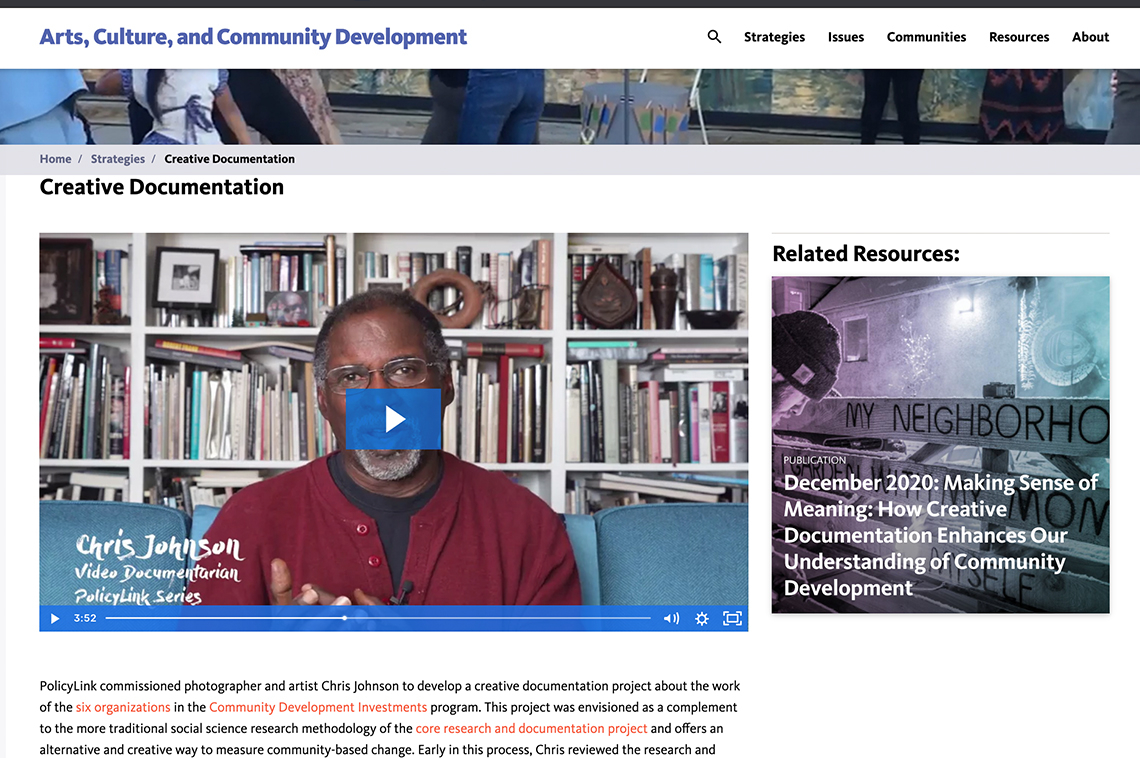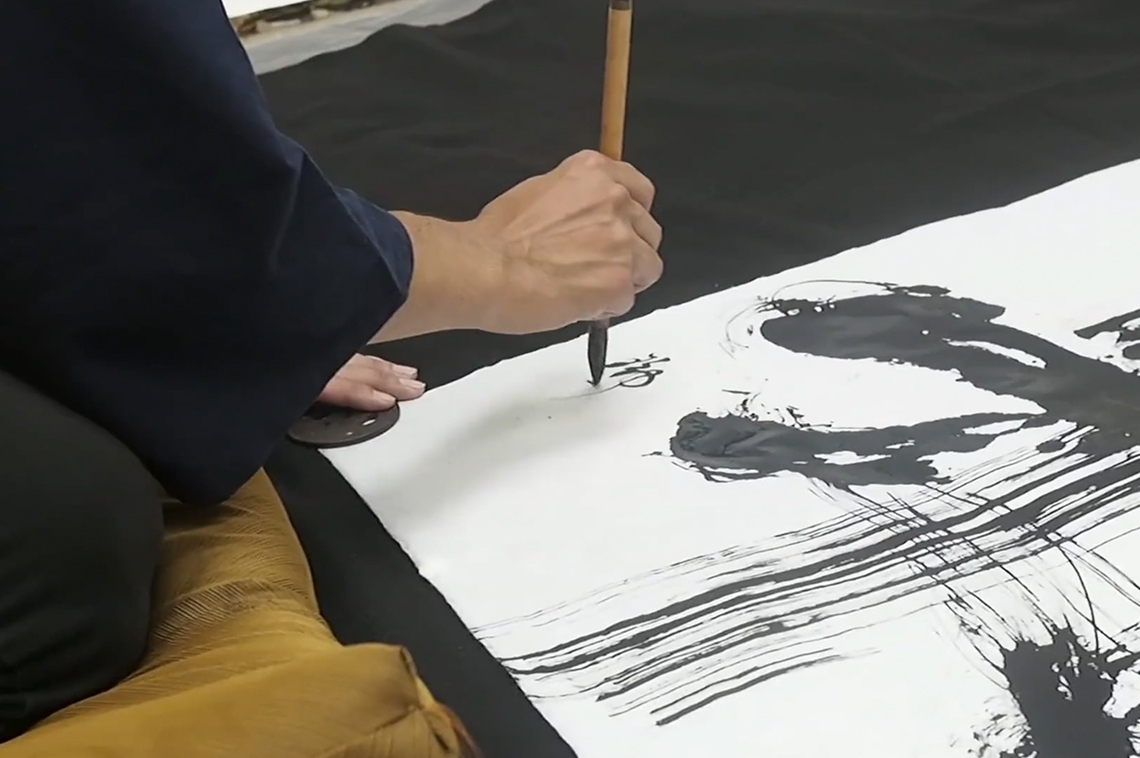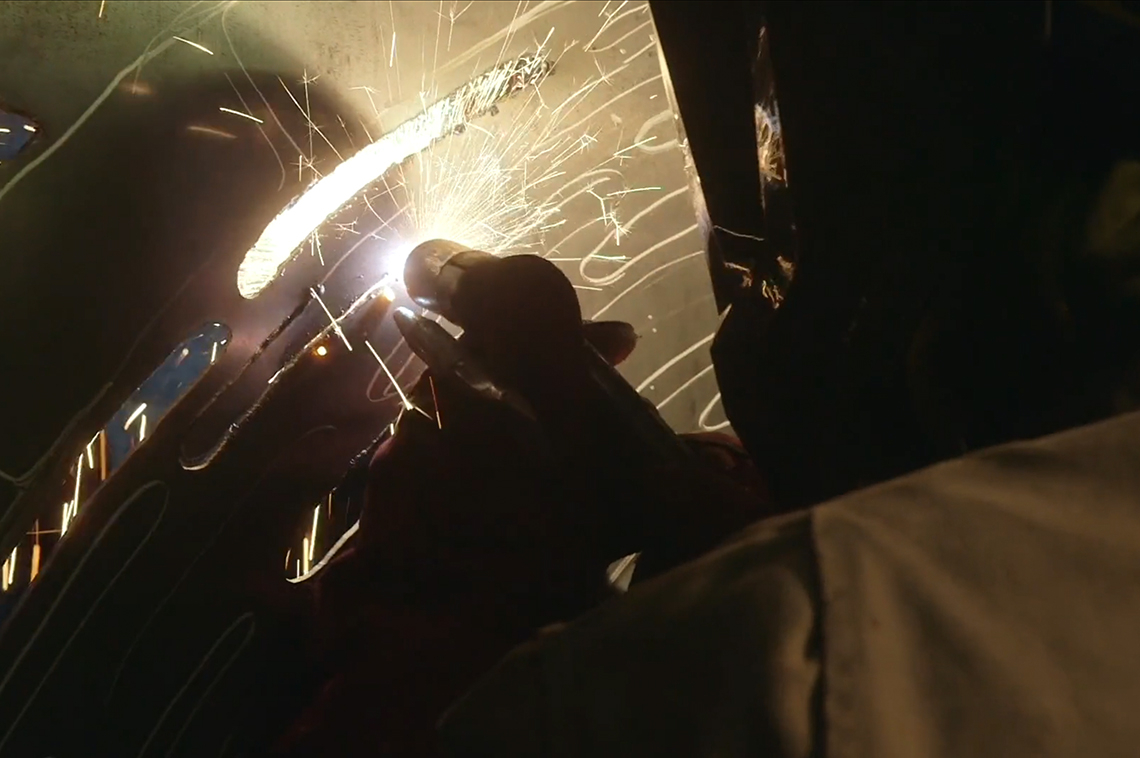


We are excited to announce the relaunch of www.communitydevelopment.art, with new briefs, videos, and new resources that examine the intersection of arts, culture, and equitable development!
Arts and culture strategies are transforming the practice of community development and the ways by which residents organize to build power. Creativity is playing a central role in public health, youth development, transportation, housing, economic development, food justice, and parks organizations, and provides energy and guidance for movements to achieve racial justice and protect communities from displacement. Artist and culture bearers have been key leaders in social responses to the pandemic. Everywhere one looks, the intersection of arts and community building is becoming a more established and effective component of the equity movement.
At PolicyLink, it has been our privilege to work with and document the leaders in this arena, and with today’s relaunch of the new edition of our dedicated website, we can share what we have learned and collected. Our site began in Spring 2019 as the place where the experiences of the groups in the ArtPlace America Community Development Investments (CDI) initiative would be documented. In that first iteration, we posted several briefs and webinars and scores of project descriptions as these six urban, rural, and tribal community-based organizations took on arts and culture strategies for the first time. We documented how these groups and their partners advanced their community goals but were also themselves transformed through their embrace of creativity and recommitment to their cultural values.
As Carol Gore, CEO of the Cook Inlet Housing Authority of Anchorage, said “We were trying to navigate: how do we still be an Alaska Native organization that meets our mission of empowering our people, building community and providing housing opportunities, while at the same time lifting other cultures, and honoring and respecting them, but letting them know that people and place matter to us and they have a unique meaning. Can we share that together?”
Now, as the CDI initiative and ArtPlace draws to a close, the website is home to many more videos, reports, articles, publications, project descriptions, and the lessons we have derived from five years of observation, analysis, and engagement.
Here are some highlights:
- We’ve codified strategies for preserving cultural identity in the Little Tokyo community in Los Angeles and in the Zuni Nation and for bridging cultural divides in rural Minnesota, as part of the brief on Strengthening and Connecting to the Social Fabric of Communities.
- Stories, in the brief Making Sense of Meaning: How Creative Documentation Enhances Our Understanding of Community Development, convey how creative strategists help a medical facility in Jackson use arts and culture to fully engage with neighbors outside their walls as well as within, and how artists working with a citywide parks conservancy in Philadelphia uncovered and celebrated a park-adjacent neighborhood’s cultural assets and history.
- Reflections of nearly 100 CDI community leaders on the personal meaning of this work are captured in moving, well-crafted videos from artist Chris Johnson.
- New pieces which describe how the CDI research and documentation was carried out, including not only more conventional social science methods but also the efforts of innovative “artist-researchers.”
A much wider spectrum of experiences beyond CDI is also now shown on the site. The Communities and Issues sections have been greatly expanded to include reports, videos, and websites about many other organizations and campaigns, each one of them breaking new ground. There are introductions to other PolicyLink projects, from an upcoming presentation with the voices of “We the 100 Million” to an exploration of the practice and theory of social cohesion — bringing people together through arts and culture and what that means for community well-being.
The recent final ArtPlace Summit showed that even virtually, there is a remarkable network of thousands of people who see the unique value in bringing arts and culture to bear on social issues, and we’re happy to give that network a place on the web to see themselves and their peers. We hope you’ll check out the site and return to it as additional material is added in 2021.





